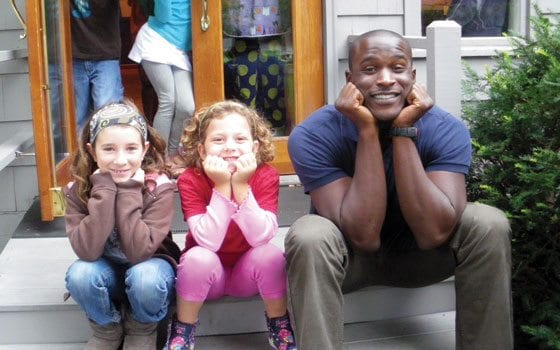
I had three of them at Roland Park Junior High School. One taught geography, one taught math and one taught science. I couldn’t believe what I was seeing. All of my teachers prior to seventh grade were white or African American women.
Imagine my surprise on the first day of school. There at the front of the classroom stood Mr. Moore — 6 feet tall, skin the color of ebony, dressed in a shirt and tie protected by an immaculately pressed white lab coat. With a voice that seemed to have echoed from a megaphone, I heard “Miss Humphries!” I almost jumped out of my seat.
With the mere calling of my name, Mr. Moore let me know immediately that those elementary school days of ripping and running on the asphalt playground had ended. I was now in junior high school — a place where the real preparation for one of those highly coveted seats at the all-girl exam school was about to begin.
To this day, I still remember Mr. Moore with deep admiration. Here was a teacher who loved the art and craft of teaching. Here was a teacher who genuinely cared about the students he taught. Here was a teacher of future teachers.
Here was the first teacher who called me “Miss.”
These days, few students can recall such an experience with a teacher of color or an African American male teacher. Historically, teaching was a profession that many African Americans pursued. It was a highly esteemed role in the African American community. After Brown v. Board of Education, though, the number of African American teachers slowly declined, and the field of education continued to be largely dominated by women.
In 1969, one year after Martin Luther King Jr.’s assassination, Shady Hill School hired Mrs. Faith Chase, an African American woman, to teach young children in a pre-kindergarten classroom. She was one of the first African American teachers hired to teach at Shady Hill. When one mentions Mrs. Chase’s name to former Shady Hill parents, their faces brighten as they begin to share stories about how much Mrs. Chase made a difference in the lives of the children she taught.
Stories like these about Mr. Moore and Mrs. Chase make me proud to be an African American teacher. As the director of teacher training, I have worked with an amazing faculty at Shady Hill and, more recently, Haggerty Elementary School in Cambridge to prepare teachers of diverse backgrounds for independent and public schools.
Many say that it is hard to find a teacher of color. Shady Hill’s Teacher Training Course (TTC) has trained more than 40 in the past decade. We know how powerful an impact a teacher of color can have on our children.
Coleman Craddock-Willis, a Shady Hill alumnus and high school student at Concord Academy, wrote an essay about one such teacher who was trained in the TTC:
“One of the people who have had a major influence on me was a teacher of mine, Mr. Hyon Herbert. He and I met in my sixth grade year at Shady Hill when he came to work as an after-school teacher and then as a teaching apprentice the following year. From the first day, we forged a strong relationship. Mr. Herbert is African American and Korean, and he appreciates the rich history of both while mostly thinking of himself as a Black man. He showed me that he values education because he took the time to teach me and my friends about many things, including issues of social justice and equity for all people. He always encouraged us to do our best academically and to think critically about what we were doing. He took learning seriously because he was also a student practicing to become a teacher. By his example of determination, he inspired me to strive for excellence.”
It’s 2009. Mr. Ron Sullivan, professor of law at Harvard University and the parent of a third grader at Shady Hill, told Terris King II, an African American male apprentice in our teacher training program, “Diversity in the front of the classroom is just as important as diversity in the students’ seats.” Terris takes teaching seriously. He recognizes how important it is to be in front of the classroom.
Terris is a recent graduate of Morehouse College and a native of Baltimore. Educated in private schools, he is one of the few men who chose to pursue a career in elementary education. We know this is rare. Prior to his apprenticeship, he was a substitute teacher in the Baltimore City Public Schools. He came to Shady Hill School’s Teacher Training Course determined to learn from the best in the profession.
His mentor is Mrs. Paula DelloRusso, a master elementary teacher who knows all too well what motivates 9-year-old children to learn. Terris gets to observe, emulate and consult with Paula daily after he teaches. Next spring, he will build upon a strong foundation laid at Shady Hill by working with Ms. Ashley Warlick, a third grade mentor at Haggerty Elementary School in Cambridge.
“Why choose to become an elementary school teacher?” I asked Terris.
He replied with genuine sincerity: “Early childhood education is the foundation. The nurturing starts there. If children see diversity early in their development, they will begin to appreciate difference early. I read a life-changing essay by W.E.B. Du Bois. In ‘The Talented Tenth,’ DuBois said educating our people is a responsibility. This created the framework for how I live my life. Teaching is more than a career path. It is a responsibility. It is an obligation to go back and teach.”
Desiree Ivey is the director of teacher training at Shady Hill School.






